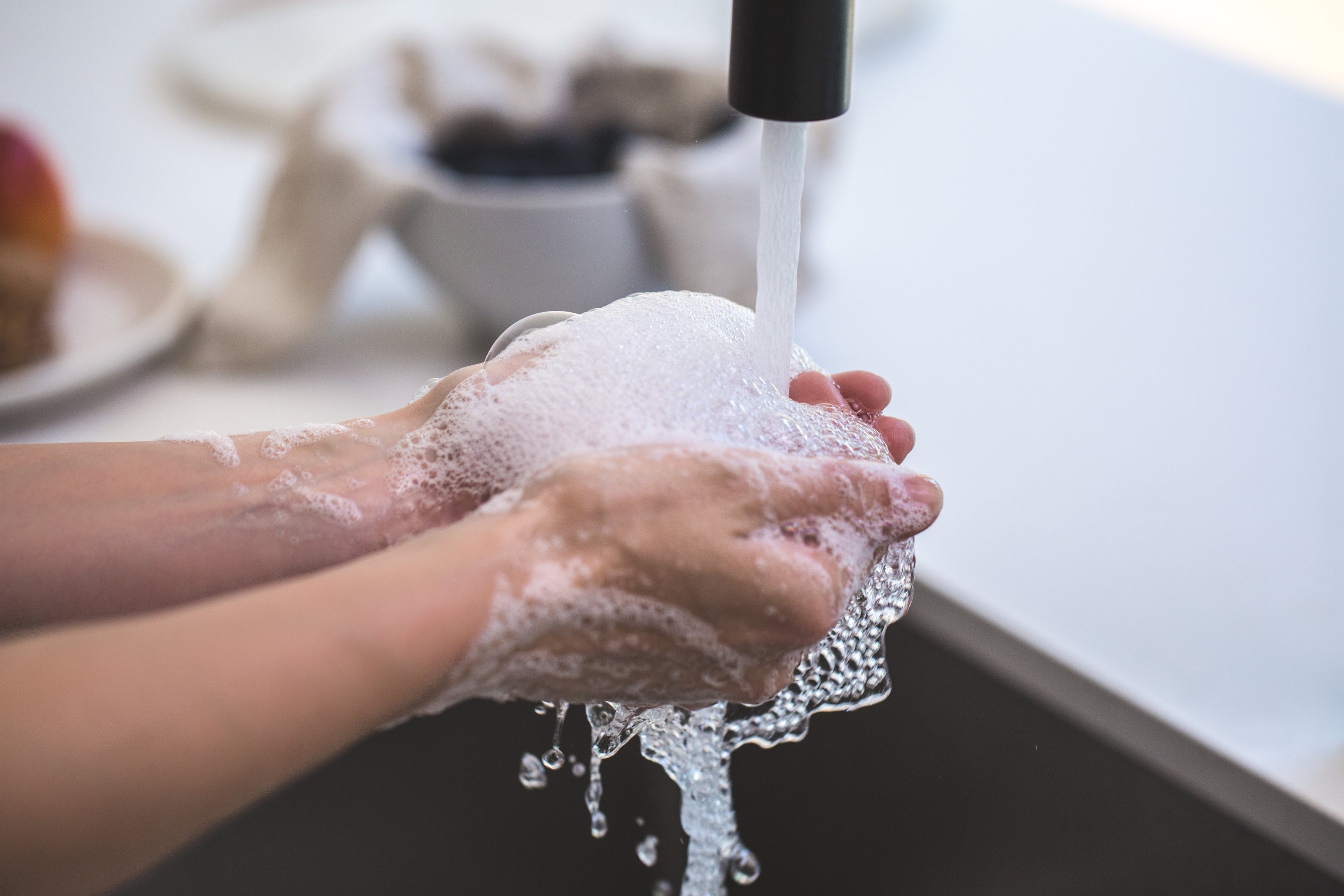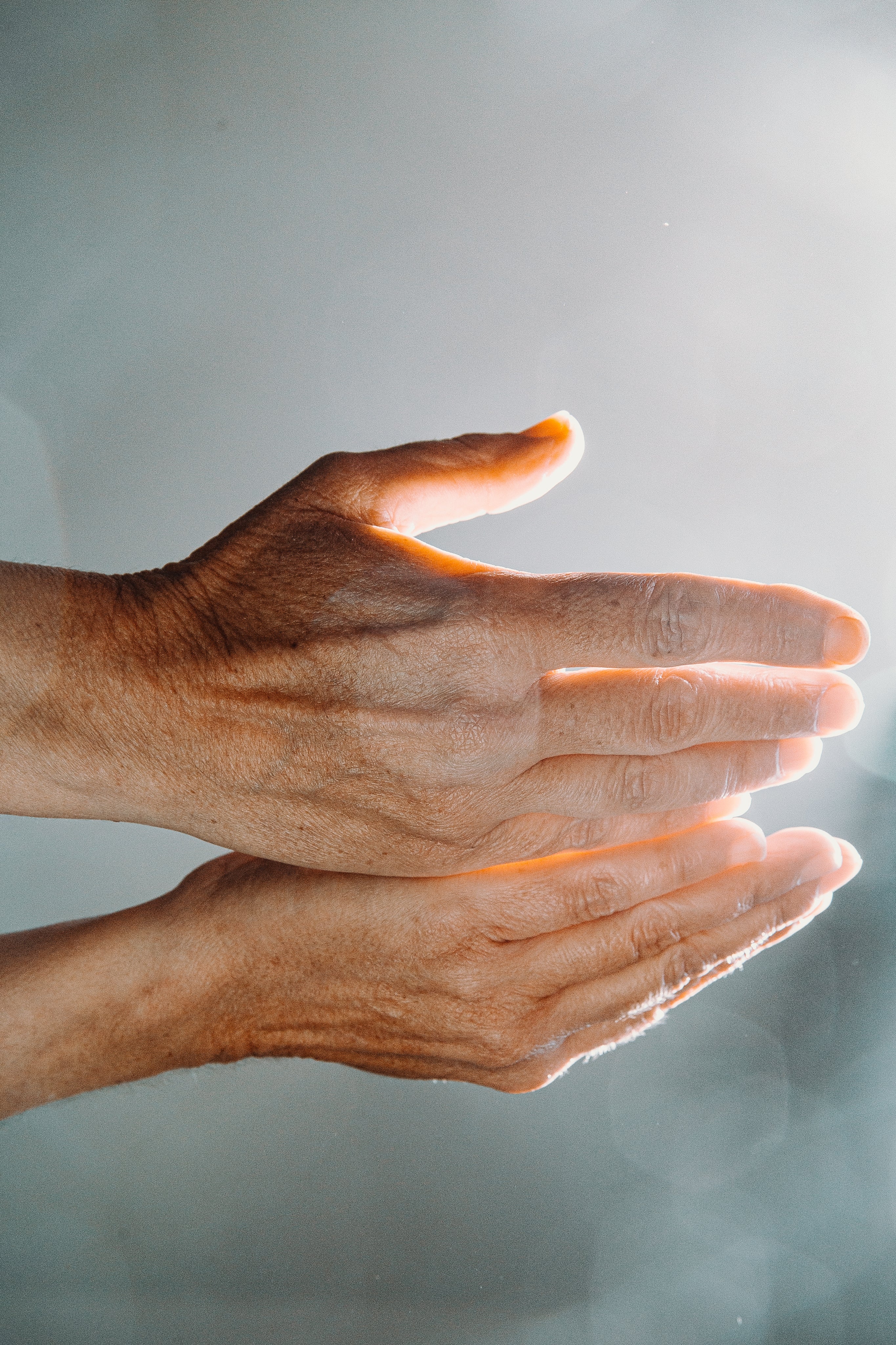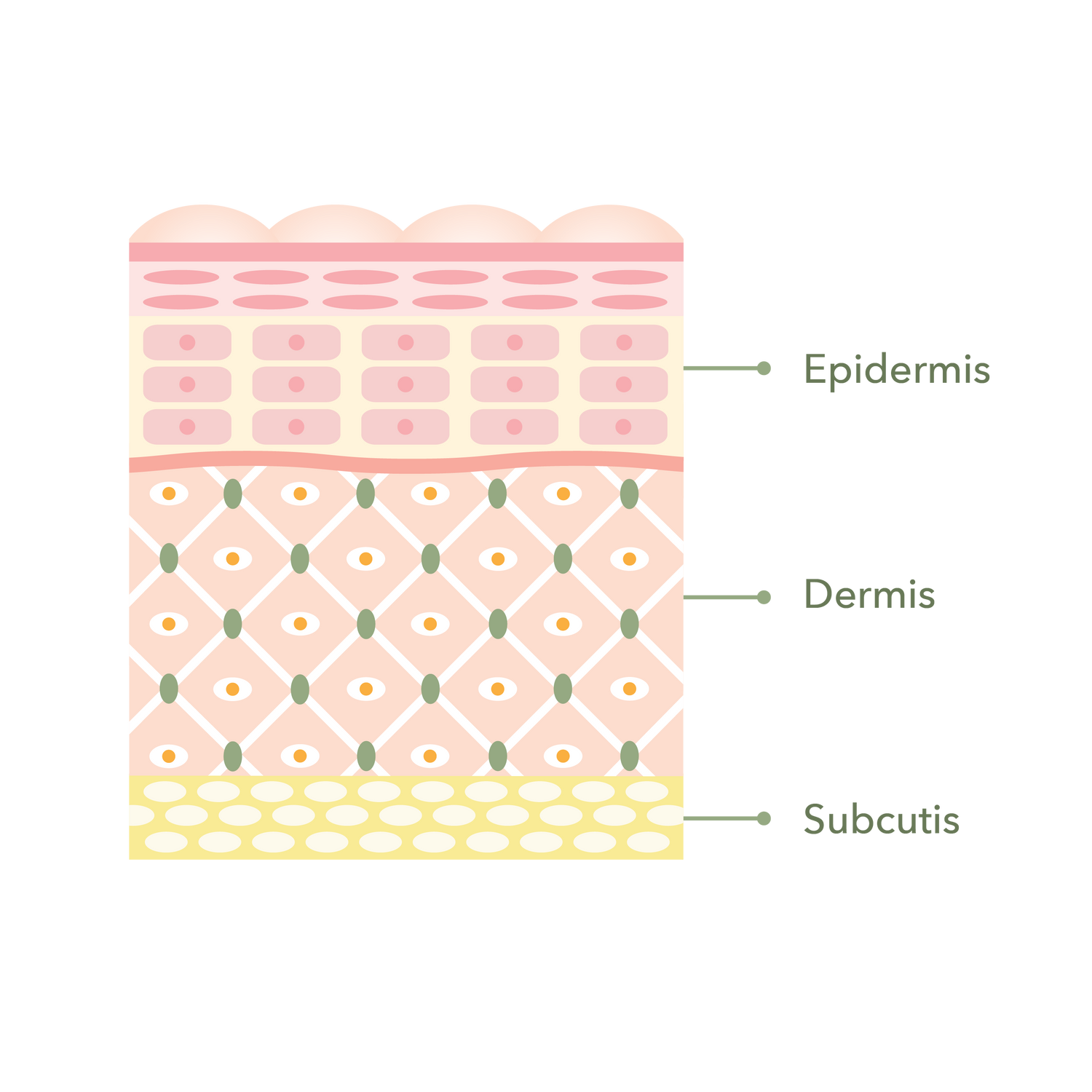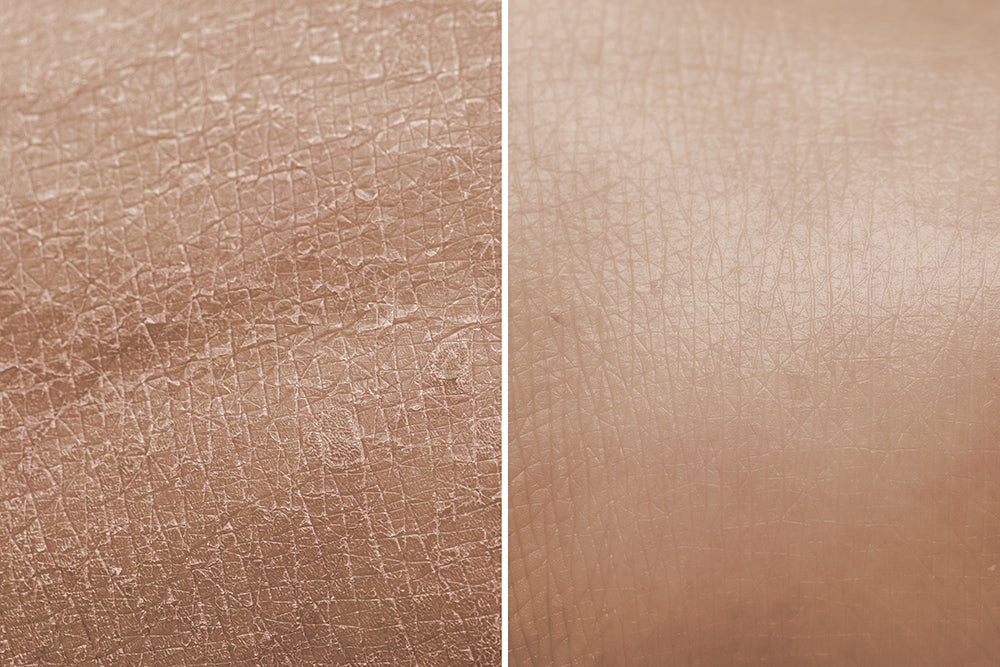The Miracle That is Our Skin
The skin is the human body’s largest organ and is a very good indicator of our general health.
Think about just how versatile our skin is, based on the range of functions it performs, including as:
-

a waterproof wrapping for our entire body; the first line of defence against bacteria and other organisms
-

a key in the production of Vitamin D, which helps prevent many diseases including osteoporosis, cancer, heart disease, obesity, and neurological diseases
-

a sense organ that gives us information about pain, pleasure, temperature, and pressure
-

a cooling system via sweat

OUR SKIN'S THREE LAYERS
The epidermis is the skin you can see. It varies in thickness but averages less than half a millimetre. It resembles a ‘brick wall’ of cells bound tightly together to keep good things in and bad things out of our bodies.
The dermis is under the epidermis and is made up of elastic fibres (elastin) for suppleness and protein fibres (collagen) for strength. It contains sweat glands, sebaceous glands, hair follicles, blood vessels, and nerves.
The subcutis is a layer of fat that sits immediately under the dermis. It provides thermal insulation and mechanical protection. Adipose fat stored in the subcutis is a source of energy.

KEEPING YOUR SKIN HEALTHY IS KEEPING HEALTHY
As skin has so many important roles, it should be treated with care and respect. However, perhaps because it is so amazing, many people only start focusing on their skin once there is an issue or abnormality.
Depending on how much your skin is exposed to excessive physical and environmental wear and tear, you may need to give it some particular attention to improve or maintain its health – and your overall health.
However, it’s also considered to be a good idea to proactively take care of your skin to support and optimise its (and your) wellbeing.





